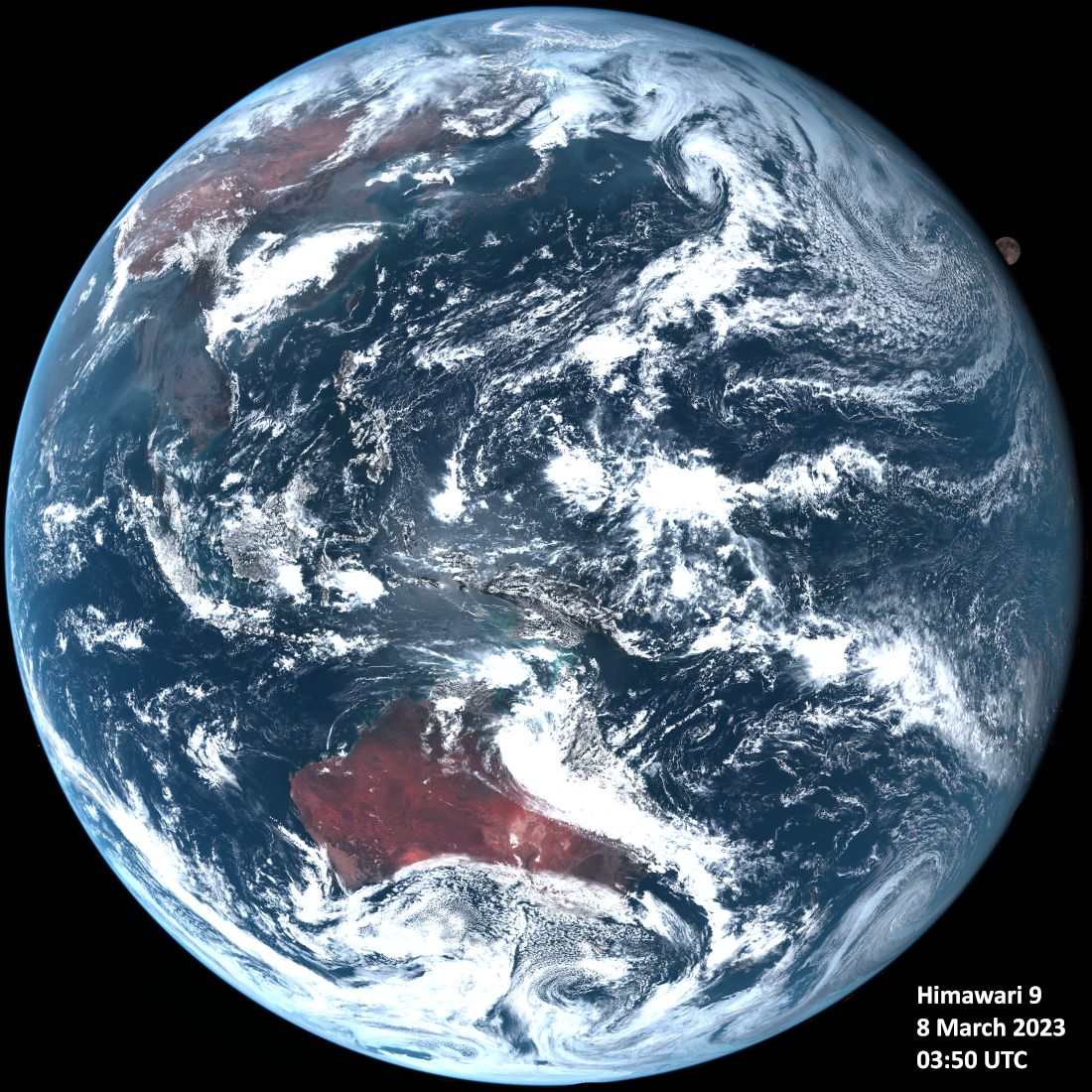
ΔFusion Method
ΔFusion is a deterministic framework that enhances spatial and temporal detail in Himawari-8/9 data by combining three measurable deltas taken directly from the satellite fields:
• Δr – radiance gradients capturing fine-scale spatial structure
• ΔT – brightness-temperature deltas capturing thermal and height shifts
• Δm – motion deltas capturing time-forward evolution and plume behaviour
The method is applied consistently across the Himawari bands and does not rely on arbitrary smoothing, resampling statistics or machine-learning adjustment.
Resolution and detail
ΔFusion is designed to resolve atmospheric structure at 500 m and 10-minute scales, consistent with the native strengths of Himawari-8/9. It aims to retain and clarify information that is usually lost when data are averaged to hourly products or degraded to multi-kilometre grids.
The method resolves fast-changing aerosol and thermal features such as smoke fronts, dust edges, inversion-controlled layers, pyrocumulus growth and shifting fire behaviour that are not visible in coarse or infrequent products.
Physical basis
The atmosphere behaves as a large analogue computer, continuously solving the governing equations of motion and thermodynamics. Himawari-8/9 measures the outputs of this system every 10 minutes across 16 bands. ΔFusion treats these measurements as physical fields to be interpreted, not re-modelled.
By working directly with radiance, brightness temperature and apparent motion, ΔFusion captures:
• wind shear and deformation
• inversion layers and stable boundaries
• convective pulses and fire-induced updrafts
• transitions between smoke, dust and mixed aerosol cases
• rapid changes in plume direction and spread
What sets ΔFusion apart
Many operational approaches depend on aerosol optical depth (AOD) products that are smoothed to scales of several kilometres, or on sensors with one or two overpasses per day. This leads to:
• strong spatial smoothing at scales around 6 km
• limited temporal coverage (for example MODIS twice per day)
• loss of short-duration peaks that drive exposure
• cross-border gaps where modelling frameworks change
• dependence on sparse monitoring of a small set of pollutants
AOD is not the same as burden of disease (BoD). Health impacts depend on the intensity, duration and timing of ground-level exposure. Short, high-concentration spikes can be critical yet are often washed out in daily or hourly averages.
ΔFusion does not attempt to replace physical models. Instead it restores and clarifies the fine-scale structure in the satellite record so that dispersion modelling and exposure assessment can be based on realistic transport and plume behaviour.
Integration with CAMS and dispersion models
ΔFusion is applied before integration with CAMS reanalysis, dispersion models and ground monitoring data. The goal is to:
• preserve short-duration peaks in the satellite record
• improve timing of plume arrival and departure
• separate smoke and dust where band responses differ
• align apparent motion with physically consistent advection
This allows dispersion modelling outputs and CAMS-derived concentrations to be interpreted in the context of observed structure, rather than treated as the only description of the event.
Air-type classification
ΔFusion supports classification based on air type rather than individual chemical species. Different bands respond more strongly to different aerosol types:
• smoke is prominent in band B03 and related visible channels
• dust is clearer in B06 and selected thermal channels
• pyrocumulus outflows and mixed cases can be tracked using combined indices
This band-based approach allows smoke, dust and mixed plumes to be identified and followed consistently, including at night when only thermal information is available.
Applications
ΔFusion is intended for practical use alongside dispersion modelling and regulatory assessment. Example applications include:
• bushfire smoke reconstruction
• dust transport and visibility analysis
• interpretation of high-exposure episodes relevant to burden of disease
• support for health impact assessments
• infrastructure and resilience planning
• fire-behaviour diagnostics and event reconstruction
• validation and interpretation of dispersion model outputs
• scientific and legal evidence where event detail matters
Potential benefits for mining operations
ΔFusion and high-frequency Himawari-8/9 analysis provide several rapid-implementation advantages for mining operations, including reduced downtime, improved safety and clearer operational decision-making.
• Early detection of lightning-driven shutdown conditions, allowing controlled
pre-shutdown sequencing and avoiding abrupt operational loss.
• Short-term dust uplift prediction (10–60 minutes) using radiance and thermal
deltas, enabling adjustments to haul roads, crushers and exposed stockpiles.
• Inversion identification for blast timing, reducing off-site impacts and
minimising regulatory risk.
• High-frequency smoke and dust intrusion alerts from regional fires or adjacent
operations, supporting safe worker relocation and ventilation adjustments.
• Haul-road visibility forecasting for heavy-vehicle dispatch and rerouting.
• Detection of plume–pit recirculation using motion deltas (Δm), informing
ventilation changes and personnel safety planning.
• Rapid validation of model exceedances, distinguishing physical events from
model artefacts to avoid unnecessary shutdowns.
• Identification of rapid thermal load increases for improved crew scheduling
during extreme heat events.
For further information or project-specific applications of ΔFusion, please use the contact form.